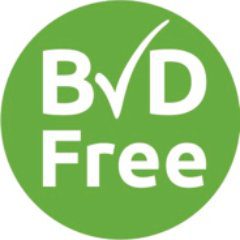BVD

Bovine Viral Diarrhoea (BVD) is a highly contagious disease which reduces the productivity and profitability of affected herds, as well as compromising animal welfare
Although BVD does cause diarrhoea, the main disease occurs when BVDV infects susceptible pregnant cows in the first 4 months of pregnancy before the foetus has developed its own immune system. The virus crosses the placental barrier into the uterus and can cause foetal death and reabsorpbion, presenting as infertility or ‘repeat breeding’. Other infected foetuses die later and can be aborted right up to term or be stillborn. Many foetuses however survive to term. Some are damaged and grow poorly but many are apparently normal. All of them are persistently infected (P.I.) with the virus, which is widespread in their bodies.
The disease is mainly spread by these Persistently Infected, (or P.I.) cattle. They will have BVD all their lives and they shed virus extensively, infecting cattle around them. Most die as calves or stirks from a fatal enteritis (mucosal disease) but a few live much longer and some P.I. animals appear normal. If a P.I. cow breeds successfully she will always produce a P.I. calf. Therefore getting P.I cattle out of the national herd is critical to any eradication attempt.
When non-pregnant cattle encounter BVD infection they may suffer only a mild disease that goes undetected (transient fever, milk drop, mild scour) but it can also be associated with significant suppression of disease resistance and may contribute towards the pneumonia complex or other diseases in calves .
This aspect of the disease can be of great importance in cattle rearing systems. Bulls infected with the virus may become infertile for several months so it is important to include them in any herd vaccination program.
There are some basic steps you can follow to minimise exposure of your herd to BVD:
- Only buy cattle from farms that are CHeCS-accredited BVD-free.
- Only buy cattle at BVD-free sales at markets.
- Only buy cattle that are individually certified virus-free and vaccinated.
- Isolate any cattle you bring in, that are of unknown BVD status, from the rest of your herd and have them tested for virus. Only put them into your herd once you know they are clear.
- BVD can be spread by nose to nose contact across fences. Ensure at least 3m gaps between fences bordering your land from neighbouring farms of unknown BVD status.
- Vaccination: It is important to understand that while vaccination may lessen the infection of BVD it will not eradicate BVD, either from a herd or nationally. P.I. cattle are so highly infectious that they will continue to spread BVD even if the herd is vaccinated. It is vital that the vaccine is administered exactly as instructed on the data sheet. This means giving two doses 4-6weeks apart and then a booster 6/12 months later and annually thereafter. If you don’t follow the instructions, your herd will not be properly protected. It is possible to eradicate BVDV either with or without the use of vaccines, but if a non-vaccination route is chosen, biosecurity is critically important.

You can download the information leaflet by clicking button below.
